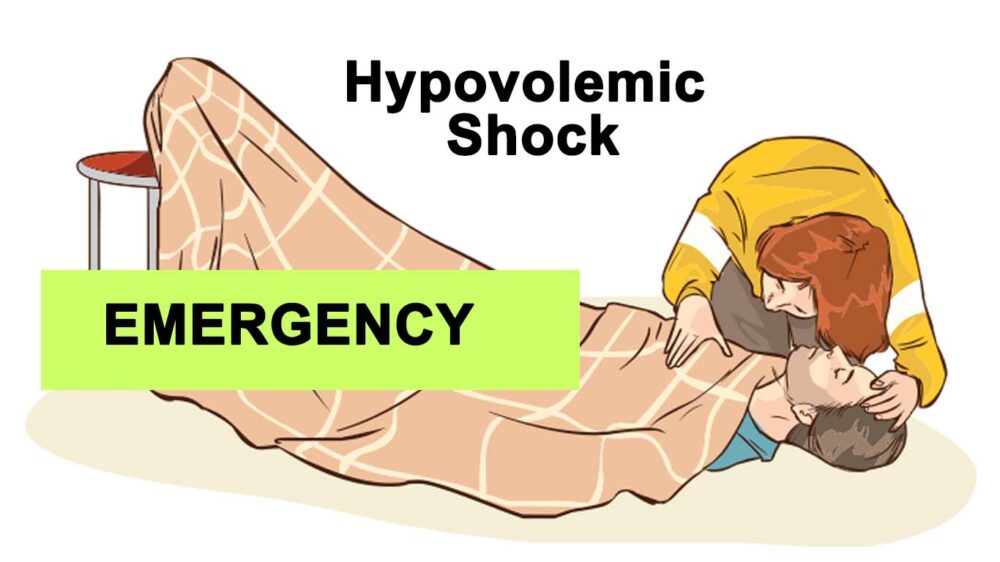
Shock
March, 2022

EMERGENCY
– ACT FAST –
What is Hypovolemic Shock?
‘Hypo’ means lower and ‘volemic’ refers to volume: hypovolemic shock occurs when your body rapidly loses a lot of blood or other fluids. If the volume gets too low, the heart may be unable to pump enough blood to keep organs working.
What causes it?
The most common cause is severe bleeding, including internal bleeding such as might occur after a serious car accident. Losing 20% or more of your blood will cause hypovolemic shock. Significant loss of other types of bodily fluids — from extreme vomiting or diarrhea, severe burns, or excessive perspiration — can also cause hypovolemic shock.
What are the symptoms?
Symptoms may include:
- Quick shallow breathing
- Rapid heartbeat
- Low blood pressure
- Sweating or cold, clammy skin
- Pale or ashen appearance
- Enlarged pupils
- Weakness or tiredness
- Wooziness, confusion, or agitation
- Nausea or vomiting
If you suspect someone is going into shock
– Call 911 –
Have the person lie down flat with legs/feet lifted about 12” to increase circulation UNLESS there is concern about a possible spinal injury; if so, the victim should not move or be moved.
Loosen any tight clothing and keep the person still; cover with a blanket for warmth.
Control any visible bleeding by applying steady pressure with a clean cloth folded into a pad (learn more about controlling bleeding here.)
Don’t let the person eat or drink anything.
If the person vomits or begins bleeding from the mouth, turn them on their side to prevent choking (except when a spinal injury is suspected.)
Sources: medlineplus.gov (cited March 1, 2022); mayoclinic.org
 Lyme Ambulance Association, Inc.
Lyme Ambulance Association, Inc.

